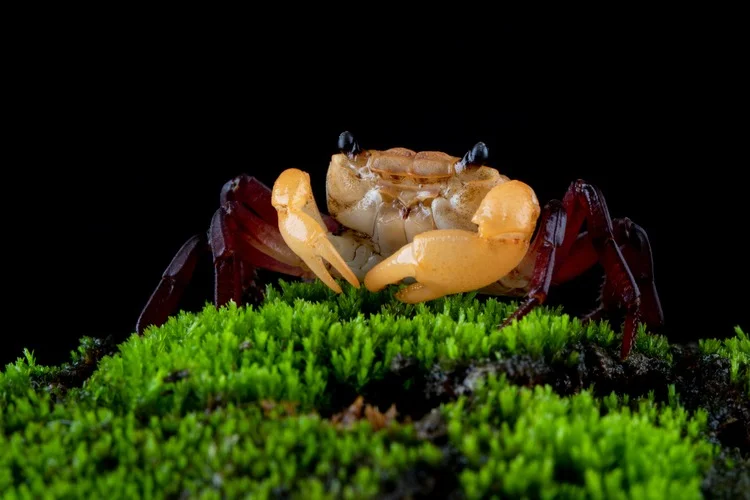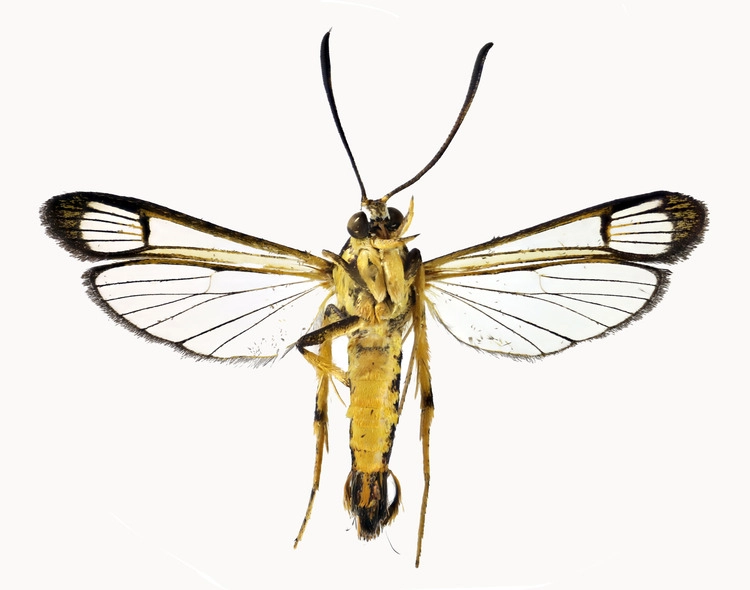
Discover some of the fascinating new species discovered across the world in 2024 and where exactly they were found
By
Each year, around 18,000 new species are discovered across the world from the depths of the oceans to the highest of mountain ranges. As scientists look toward the next fascinating plant or animal on the horizon, here we recap some of the most interesting creatures found on our planet in 2024:
Skeleton panda sea squirt (Clavelina ossipandae)
Located off the coast of Kumejima in Japan lie incredible see-through creatures – measuring less than an inch long – with markings that make them look just like a panda in a Halloween costume. Unsurprisingly, these are known as skeleton panda sea squirts (Clavelina ossipandae). First noted in 2017, this year divers were able to conclusively identify them as an entirely new species.
While scientists do not yet know the function of the panda pattern, they do know a lot about these small creatures. Similar to other sea squirts – of which 300 different types live in Japanese waters –skeleton pandas attach themselves to objects in the water, pumping water through siphons to filter nutrients from water, and can be found in waters with a depth of up to 20 metres (66 feet).
The unusual bone-like structures that feature on skeleton pandas have a more concrete purpose: they are in fact blood vessels that run through their gills.
Banded dragonfish (Akarotaxis gouldae)
During an investigation of museum larvae samples, researchers at the Virginia Institute of Marine Science discovered a new species of fish, the banded dragonfish (Akarotaxis gouldae). Research suggests that the creature became a separate species around 780,000 years ago.
It is limited to a small area in the Western Antarctic Peninsula – an area known for heavy krill fishing – and is thought to have one of the smallest ranges for any fish in the Southern Ocean.
Analysis of female dragonfish ovaries show that the creatures produce little offspring. Combined with the threats it faces due to its habitat located in a heavy fishing zone, the banded dragonfish is already vulnerable to environmental changes.
Its Latin name pays homage to a vessel that played a significant role in Antarctic research for more than twenty years, the ARSV Laurence M. Gould.
Grumpy dwarfgoby (Sueviota aethon)
When this grumpy-looking fish was first discovered this year, scientists believed they were seeing a previously-known species, the fiery dwarf goby (Sueviota pyrios), that hadn’t been encountered since 1972. Upon further analysis, research concluded that this fish was, in fact, an entirely new species, found in the Farasan Banks in Saudi Arabia, as well as near Thuwal in the Red Sea. The gobiidae family – to which this frowning fish belongs to – is made up of 2n000 species of bony fish.
Measuring no more than two centimetres long, the grumpy dwarf goby might look bright but, in fact, perfectly camouflages with the bright-red coral in its natural habitat. Along with its ability to hide from prey, it uses its large canines to capture the invertebrate which it feeds on.
Northern green anaconda (Eunectes akiyama)
Green anacondas have long been thought of as the singular largest snake species in the world, but scientists recently discovered a second species of the huge creature while filming a National Geographical documentary.
Spanning more than seven metres long, and weighing more than 250kg, these anacondas live in the basins of the Amazon and Orinoco in South America. While the northern green anaconda might look almost identical to its counterpart, the southern green counterpart, the two species possess a huge difference in genetic divergence. Humans and apes have a genetic divergence of just 2 per cent, but the divergence between these anacondas sits at 5.5 per cent. This means that scientists will need to conduct more research to see how each species may require differing support to mitigate any threats to its survival.
It is estimated that the green anaconda diverged into two species around 10 million years ago.
Clearwing moth (Carmenta brachyclados)

This new species of clearwing moth – not native to the UK – was found in Port Talbot in Wales in 2024.
In February, the moth was spotted in a home shared by ecologist Daisy Cadet and her mother. After uploading photographs of the moth to social media, an investigation began involving National History Museum scientists to confirm that the species was officially undescribed in literature.
Scientists believe it was brought into Europe in a boot bag after a photography trip to Guyana more than 4,500 miles away.
Clouded tiger cat (Leopardus pardinoides)
Although clouded tiger cats (Leopardus pardinoides) split from the other two tiger-cat species more than two million years ago, it has only been discovered this year.
The clouded tiger cat is found in the cloud forests of southern Central America, as well as the Andean mountain ranges. In Central America, the cat is found in Costa Rica and Panama, within the Tilarán, Central Volcanic, and Talamanca mountain ranges. The misty forests that clouded tiger cats live in face imminent threats from climate change – with warming set to reduce cloud immersion – so the discovery of the species is even more important to help protect them from future harm.
Clouded tiger cats spend most of their time in trees, feeding on small mammals, birds and insects.
While it may seem obvious where clouded tiger cats get their name from – the forests in which they inhabit – the cloud-like spots that cover the species’ entire body also form part of the reason.
Three-coloured crab (Lepidothelphusa menneri)

Discovered by Indonesia’s National Research and Innovation Agency and the National University of Singapore, this tiny three-coloured crab (Lepidothelphusa menneri) is another one of the fascinating new species that scientists have found in 2024.
Preferring to hide beneath leaves and roots, the three-coloured crab is difficult to capture, especially as it lives on the edge of shallow tributaries.
It has many unique features, from its multi-coloured body – made up of dark brown, bright orange and blue – to a larger claw on one side.
Scientists are unsure what the conservation status of the three-coloured crab is yet, but with other members of the Lepidothelphusa species having a limited egg-laying capacity – which could also be exploited in the pet industry – concerns are being raised that the newly-discovered species may eventually be regarded as vulnerable.




